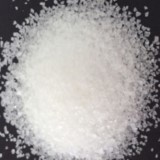|
|
Phenoxyethanol ---- Phenyl Ethanol ---- Phenyl Mercuric Acetate ---- Phenyl Mercuric Nitrate ---- Polyvinyl Acetate ---- Polyvinyl Alcohol ---- Polysorbate ---- Propionic Acid ---- Propyl Gallate ---- Propylene Glycol ---- Propylparaben ---- Propylene Carbonate ---- Butylated Hydroxyanisole |
PVA Polyvinyl Acetate Specifications of Commercial Pure & BP Ph Eur USP NF FCC Food Grade Manufacturers & Exporters
Specifications of Polyvinyl Acetate USP NF Grade: DEFINITION IDENTIFICATION Residue on Ignition: NMT 0.1% Residual Peroxides: Sample: 0.85 g of Polyvinyl Acetate Analysis: Place the Sample in a borosilicate glass flask with a ground-glass neck. Add 10.0 mL of ethyl acetate, and heat under a reflux condenser with constant agitation. Allow to cool. Replace the air in the container with oxygen-free nitrogen and add a solution of 1.0 mL of glacial acetic acid and 0.5 g of sodium iodide in 40.0 mL of water. Shake thoroughly and allow to stand protected from light for 20 min. Titrate with 0.005 N sodium thiosulfate until the yellow color is discharged. Perform a blank titration. Acceptance criteria: The difference between the titration volumes is not greater than 1.0 mL; and NMT 100 ppm, calculated as hydrogen peroxide, is found. Limit of Vinyl Acetate: To pass the test. Fats and Fixed Oils: To pass the test --- The acid value is NMT 0.5. Fats and Fixed Oils: To pass the test --- The ester value, calculated from the Saponification Value and the Acid Value, is between 615 and 675. Loss on Drying: Dry 1.5 g at 100C for 2 h in a vacuum: it loses NMT 1.0% of its weight. Average Molecular Weight and Molecular Weight Distribution: To pass the test --- The values of weight-average molecular weight and polydispersity are, respectively, NLT 85% and NMT 115% of their respective values as stated on the label. Specifications of Poly(vinyl acetate) BP Ph Eur Grade DEFINITION CHARACTERS IDENTIFICATION TESTS Specifications of Polyvinyl Acetate FCC Food Grade DESCRIPTION REQUIREMENTS |
Crystal Clear Products and the group companies are manufacturing chemicals since several decades. We have automatic vacuum operated titanium evaporators and SS316 equipments to produce top grade of chemical products. We have toll manufacturers and representatives in China, UAE, Europe, Canada & USA and agents & customers in all countries like USA, Canada, Europe, UAE, South Africa, Tanzania, Kenya, Egypt, Nigeria, Uganda, Turkey, Mexico, Brazil, Chile, Argentina, Bangkok Thailand, Kaula Lumpur Malaysia, Dubai UAE etc. & sales representative in Chicago, Houston New York & Los Angeles, USA. Associated units are FDA-GMP certified, Halal and/or Kosher certified, REACH registered, ISO-9001, ISO-22000 HACCP certified, Crisil Rated.
Contact PVA Polyvinyl Acetate IP BP Ph Eur EP JP USP NF ACS Analytical Reagent FCC Food Grade manufacturers exporters at:

Crystal Clear Products
Plot No-C1-1031-9, GIDC Estate, Panoli, Ankleshwar, Gujarat - 393002. India
Telephone Mobile: 91-7506449333; e-mail: info@crystalclearproducts.org
e-mail: info@crystalclearproducts.org
Manufacturers, Suppliers of IP BP Ph Eur EP JP USP NF FCC Food, ACS Reagent GMP Grades of Chemicals like PVA Polyvinyl Acetate




